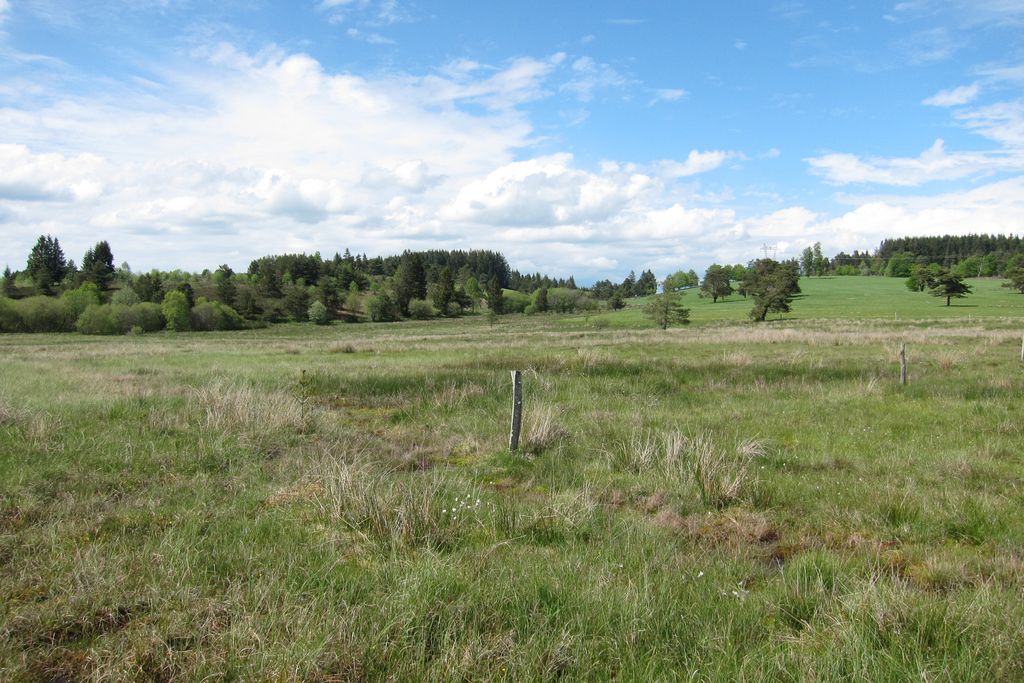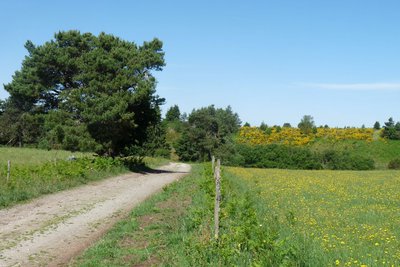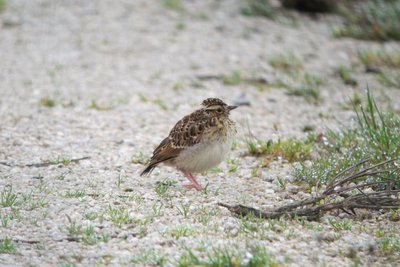
Puy des Pouges Trail
Between conifers, heathers and gentians, the route looks pleasant! A great introduction to exploring the Millevaches plateau.
7 points of interest

 Forestry
ForestryThe Douglas Fir
The forest crossed is composed of Douglas fir (Pseudotsuga menzierii), a species planted since the middle of the 20th century under the national reforestation campaigns set up by the National Forest Fund. Due to its intrinsic qualities (mechanical strength, rot-proof red core), Douglas fir wood is used mainly for construction and outdoor work.

Callune et sauterelle des bruyères - R.Petit - PNRML  Flora
FloraCalluna
Calluna (calluna vulgaris) or false heather differs from real heather in particular by its tiny leaves arranged in four rows. The name comes from the Greek word calluna, which means to sweep. The two species are often found together.
Sur le sentier du Puy des Pouges - PNR de Millevaches en Limousin  Flora
FloraThe "Pouges"
The "Pouges" are high paths. The word comes from the Latin podium: high place. In Limousin, these are often ancient roads of pre-Roman origin. They avoid wet hollows and are often located at interfluves (heights separating valleys).
 Flora
FloraThe dry heaths
The dry heaths are anthropic. They were created following the clearing of Gallo-Roman and medieval lands. After that, they were maintained thanks to the grazing of the sheep. Today replaced almost completely by coniferous trees, calluna and heather are the main constituents.

 Flora
FloraErica cinerea
Heather (Erica cinérea) is characteristic of dry heaths (poor soil) which occupied 32% of Limousin soil in the 19th century. The Limousin sheep grazed them.
 Fauna
FaunaThe Limousin sheep
The "Pouges" are high paths. The word comes from the Latin podium: high place. In Limousin, these are often ancient roads of pre-Roman origin. They avoid wet hollows and are often located at interfluves (heights separating valleys).
L'Alouette lulu - R.Petit - PNRML  Fauna
FaunaThe Woodlark
The lark, with its short tail and rounded wings, is a species listed in the Birds Directive. A lover of plant matter and insects, the woodlark frequents sparse forests or heaths. There, by day and by night, you will hear his melodious song, which is considered one of the most beautiful among wild birds.
Description
To start the hike, go behind the park cottage and walk into the meadow as far as the big holly.
- Take the track to the right at the first crossroads and continue straight ahead.
- At the second crossroads, turn left.
- At the third, continue straight ahead, walk on alongside the meadow and go through the spruce plantation.
- From the viewpoint over the Auvergne mountains and the eastern edge of the Millevaches plateau, continue by crossing the forest again by a track that leads to Le Puy des Pouges. Just before the amateur radio antenna, there is an information panel on the trail to tell you about the moorland and its birds. Continue on the track alongside the fence to the right or left depending on where the sheep are. Go to the side where the fences are open. Continue on a wide track, leaving two paths on your right.
- 100m before the D36 take a right turn. Leave the first road on the left, and at the next crossroads take the one opposite. At the next left, go back along the track you started on, which leads back to the big holly and allows you to enter the meadow just behind the Maison du Parc."
- Departure : Maison du Parc, Millevaches
- Arrival : Maison du Parc, Millevaches
- Towns crossed : Millevaches and Saint-Sulpice-les-Bois
Forecast
Altimetric profile
Recommandations
Trail not accessible to people with reduced mobility and strollers. Walking shoes/trainers strongly recommended. An orientation table gives details about the panorama and also lets you listen to the songs of different birds via Q-Codes: so don't forget your smartphone!
Information desks
7 route d'Aubusson, 19 290 Millevaches
Access and parking
13.5 km from Meymac, take the D36. 25 km from Bugeat, take the D979 and then the D36. 40 km from Aubusson, take the D23 then the D36.
Parking :
Accessibility
- Emergency number :
- 112
More information
Report a problem or an error
If you have found an error on this page or if you have noticed any problems during your hike, please report them to us here:
